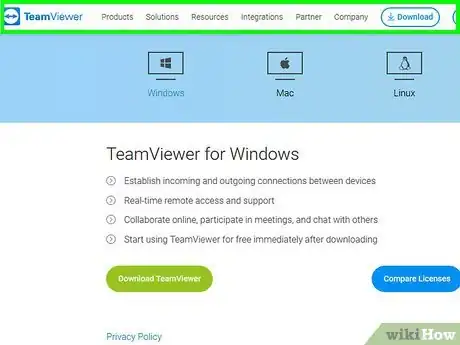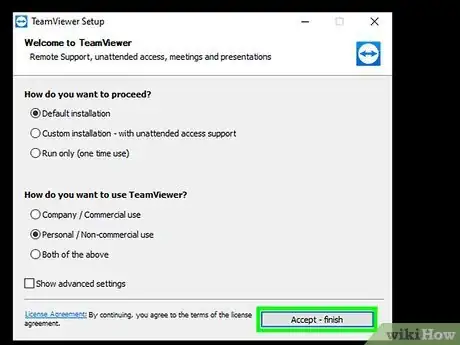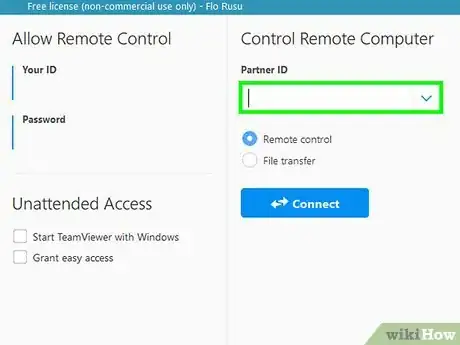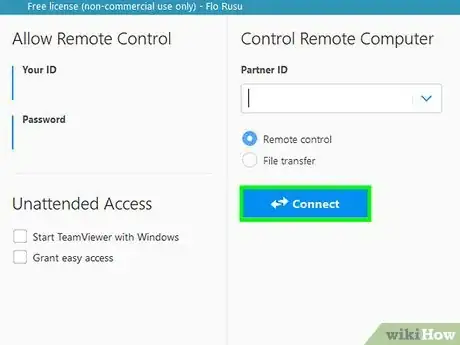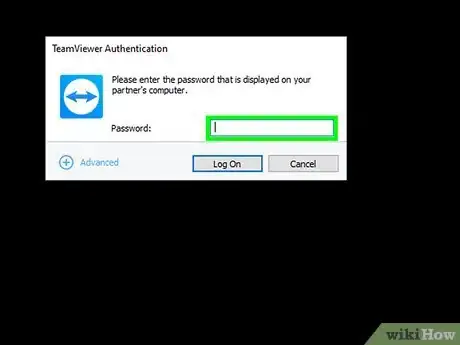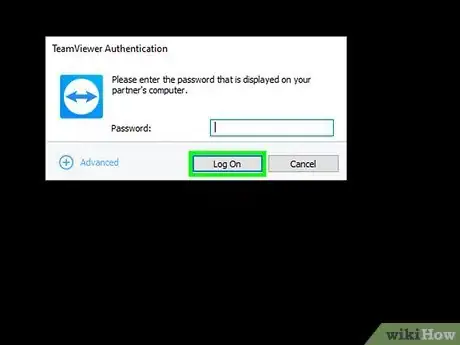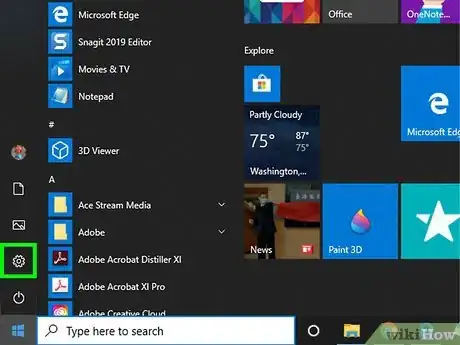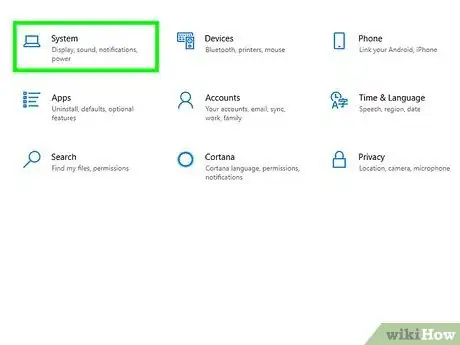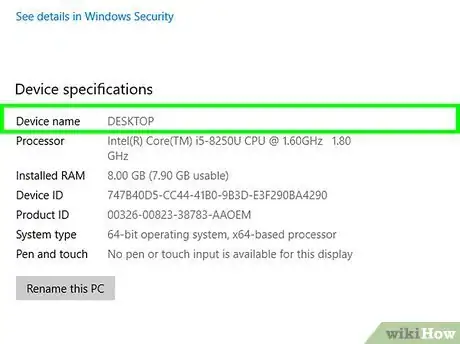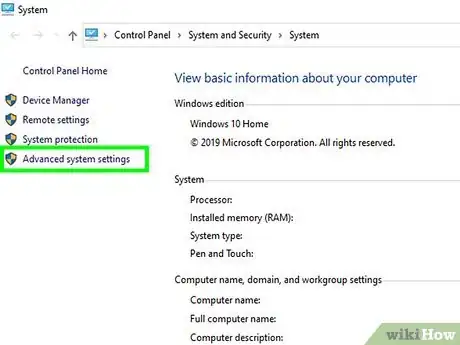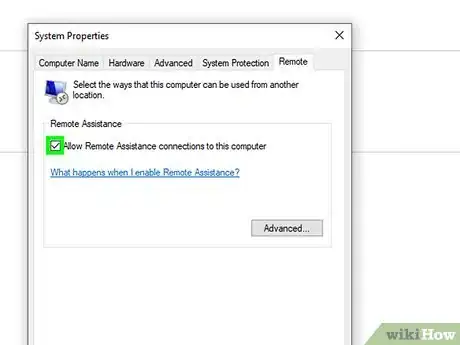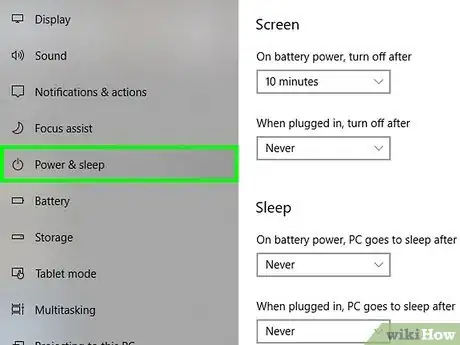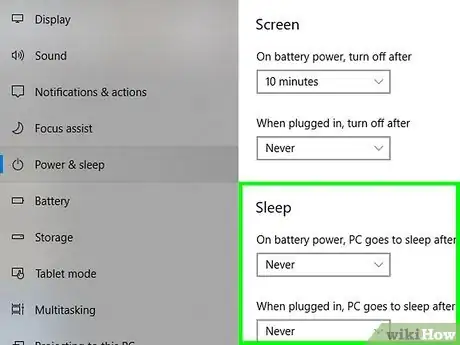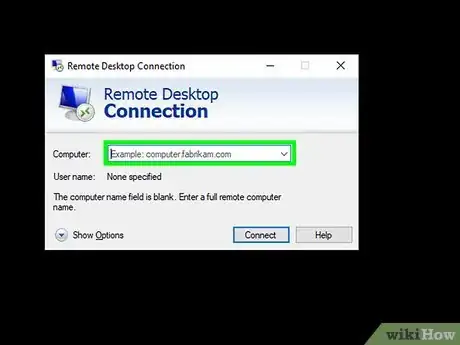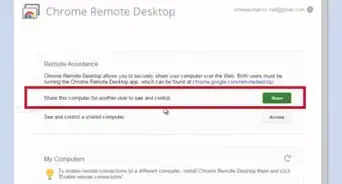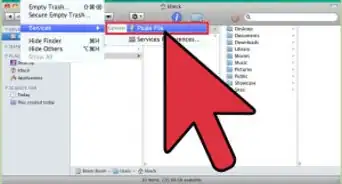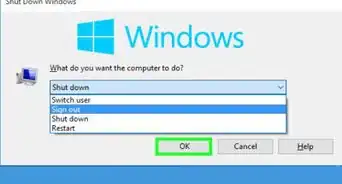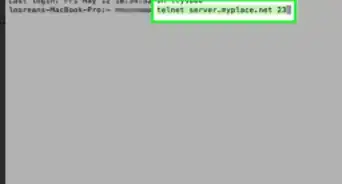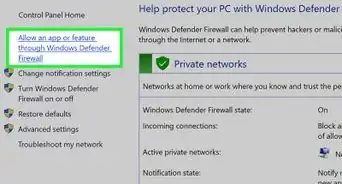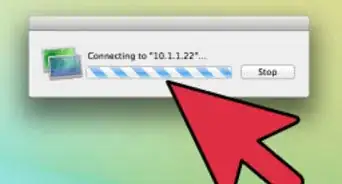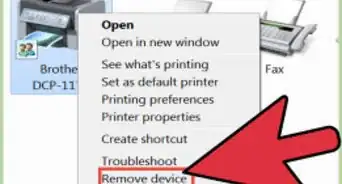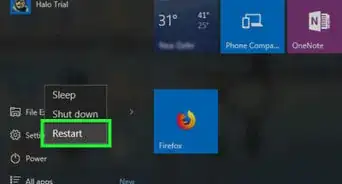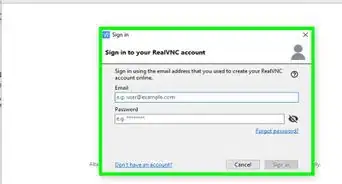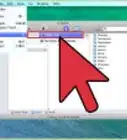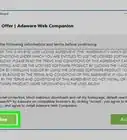This article was co-authored by wikiHow staff writer, Nicole Levine, MFA. Nicole Levine is a Technology Writer and Editor for wikiHow. She has more than 20 years of experience creating technical documentation and leading support teams at major web hosting and software companies. Nicole also holds an MFA in Creative Writing from Portland State University and teaches composition, fiction-writing, and zine-making at various institutions.
The wikiHow Tech Team also followed the article's instructions and verified that they work.
This article has been viewed 2,074,203 times.
Learn more...
This wikiHow teaches you how to access and control a computer remotely from another computer by installing remote desktop software on both computers. Once installed on both computers, you can set up one computer to be the "host," allowing it to be controlled from anywhere, so long as both computers are connected to the internet, are powered on, and have the proper software installed. Programs like Team Viewer and Chrome Remote Desktop can be installed on both PCs and Macs, whereas Windows Remote Desktop can be set up on a Windows host computer (running Windows 10 Professional) and accessed by other Windows or Mac computers.
Things You Should Know
- The Chrome Remote Desktop tool allows you to access remote computers using the Google Chrome web browser.
- TeamViewer is a remote desktop access software that’s free for private and non-commercial use on Windows or macOS.
- Note that Windows Remote Desktop can only connect PCs running Windows 10 Pro.
Steps
Chrome Remote Desktop
-
1Install Chrome Remote Desktop on both computers. This is a free tool from Google that lets you remotely control one computer with another. The tool requires using Google Chrome as your web browser, so if you don't have Chrome installed, you'll need to get it from https://www.google.com/chrome. Complete the following steps on both computers:
- Open Google Chrome.[1]
- Go to https://remotedesktop.google.com/access
- Click the blue-and-white arrow icon. This opens a new window to the Chrome Remote Desktop page on the Chrome web store.
- Click Add to Chrome on the Chrome web store, and then Add extension to confirm.
- Close the Chrome web store window so the original page is once again visible.
- Click the blue-and-white ACCEPT & INSTALL button, and then give all requested permissions to continue.
- Enter a name for your computer and click NEXT.
- Enter and confirm a 6-digit PIN. Once confirmed, Remote Desktop will start.
-
2Generate a support code on the computer you want to access. Now that Chrome Remote Desktop is installed on both computers, you'll need to generate a code that the other computer can use to access it. The code will only be valid for 5 minutes from creation, so you'll want to do this right before you're ready to make the connection. Here's how to generate the code on the computer receiving the connection:
- Click the Remote Support tab near the top of the page.
- Click the GENERATE CODE button.
Advertisement -
3Go to https://remotedesktop.google.com/support on the computer that will make the connection. Remember, you'll need to do this using the Google Chrome web browser.
-
4Type the support code into the "Give Support" blank and click Connect. It's the second blank on the page. An invitation will be sent to the computer that you're trying to access.
-
5Click Share on the computer receiving the connection. In a few moments, the remote computer's desktop will appear in Chrome on the connecting computer.
-
6Click Stop Sharing on the sharing computer to end the connection at any time.
TeamViewer
-
1Go to https://www.teamviewer.com/en/download in a web browser. You can use TeamViewer to remotely control another PC or Mac from your own. TeamViewer is free for private/non-commercial use.[2]
- If TeamViewer incorrectly determines your operating system, click your computer's OS in the row of options in the middle of the page.
-
2Scroll down and click Download TeamViewer. It's a green button near the top of the page. Doing so prompts the TeamViewer setup file to begin downloading to your computer.
- Depending on your browser's settings, you may have to save the file or indicate a download location before the file will actually download.
-
3Double-click the TeamViewer file. On Windows, this is a setup file called "TeamViewer_Setup", while Mac users will double-click the "TeamViewer.dmg" file.
-
4Install TeamViewer. To do so:
- Windows - Check the "Installation to access this computer remotely" box, check the "Personal / Non-commercial use" box, and click Accept - Finish.
- Mac - Double-click the installer package, click OK, open the Apple menu, click System Preferences, click Security and Privacy, click Open Anyway next to the "TeamViewer" message, and click Open when prompted. Follow the on-screen prompts.
-
5View your computer's ID. On the left side of the TeamViewer window, you'll see a "Your ID" section beneath the "Allow Remote Control" heading. You'll need this ID to access the host computer.
-
6Create a custom password. To do so:
- Hover over the current password.
- Click the circular arrow left of the password.
- Click Set personal password in the drop-down menu.
- Enter your preferred password into the "Password" and "Confirm password" fields.
- Click OK.
-
7Download, install, and open TeamViewer on your second computer. This should be the computer that you'll use to access the host computer.
- You can also download TeamViewer on your iPhone or Android.
-
8Enter the first computer's ID into the "Partner ID" field. This field is on the right side of the TeamViewer window, just below the "Control Remote Computer" heading.
-
9Make sure "Remote Control" is checked. If not, click the circle to the left of this option.
-
10Click Connect to partner. It's near the bottom of the TeamViewer window.
-
11Enter the password. This is the password you set in the "Allow Remote Control" section of TeamViewer on the host computer.
-
12Click Log On. It's at the bottom of the TeamViewer Authentication window.
-
13View your connected computer's screen. After a brief moment, you'll see the first computer's screen appear in the TeamViewer window on the second computer's screen.
- Once you see the host computer's screen, you can interact with it as though it were your own computer.
- To disconnect, you'll click the X at the top of the TeamViewer window.
Windows Remote Desktop
-
1Open Start on the host PC. Click the Windows logo in the bottom-left corner of the screen, or press the Windows key.
- Remote Desktop can only be used to connect PCs running Windows 10 Pro edition.[3] If the remote computer is using a different version of Windows 10, such as Windows 10 Home edition, you'll need to use a different method.
-
2
-
3Click System. This computer-shaped icon is near the top of the Settings page.
-
4Scroll down and click the About tab. It's at the bottom of the column of options on the left side of the window.
- You'll have to scroll with your cursor hovering over this column.
-
5Note your computer's name. It's at the top of the page, right next to the "PC name" heading. You'll need this to connect the second computer to this one.
-
6Click System info. It's beneath the "Related settings" heading in the top-right corner of the page.
- This option may also be at the bottom of the page if you haven't updated to the Windows 10 Creator version.
-
7Click Advanced system settings. It's in the upper-left side of the System window.
-
8Click the Remote tab. This option is in the top-right corner of the System Properties window.
-
9Check the "Allow Remote Assistance connections to this computer" box. It's below the "Remote Assistance" heading in the middle of the page.
- If this box is checked, you don't have to change anything.
-
10Click OK, then exit the System window. This will save your settings.
-
11Scroll up and click Power & sleep. This tab is near the top of the column of options on the left side of the Settings window.
-
12Click both drop-down menus and select Never for each of them. This will prevent the host computer from going to sleep or shutting down when you are remotely connected to it.
-
13
-
14Enter the host computer's name. Do so in the "Computer:" field near the top of the Remote Desktop window.
- On Mac, first click + New in the top-left corner of the app window, then enter the computer's name in the "PC Name" field.
- You can also type the host computer's IP address into the computer's name field.[4]
-
15Click Connect. It's at the bottom of the Remote Desktop window. When the connection is made, the host computer’s display will appear in a window on your computer.
- On Mac, double-click the connection name you just created in the My Desktops drop-down list.
Community Q&A
-
QuestionWill the user at the host computer know their computer is being viewed?
 Faze CHEFCommunity AnswerYes (if you're using the RDC tool that Windows has). If you're using more illicit software, the host shouldn't be able to tell if someone is looking at their PC.
Faze CHEFCommunity AnswerYes (if you're using the RDC tool that Windows has). If you're using more illicit software, the host shouldn't be able to tell if someone is looking at their PC. -
QuestionCan I access my computer from a different country?
 Community AnswerYes, as long as there is an internet connection with both of the computers.
Community AnswerYes, as long as there is an internet connection with both of the computers. -
QuestionCan I access a remote computer when it is off?
 Community AnswerYou can't. But you can turn it on with the Wake On Lan (WOL) command if you are in the same network, and then you can connect.
Community AnswerYou can't. But you can turn it on with the Wake On Lan (WOL) command if you are in the same network, and then you can connect.
Warnings
- The computer that you are trying to access remotely must be powered on, otherwise other computers will not be able to access it.⧼thumbs_response⧽
References
- ↑ https://support.google.com/chrome/answer/1649523?co=GENIE.Platform%3DDesktop&hl=en
- ↑ https://www.teamviewer.com/en/products/teamviewer/
- ↑ https://support.microsoft.com/en-us/help/4028379/windows-10-how-to-use-remote-desktop
- ↑ https://support.microsoft.com/en-us/help/17463/windows-7-connect-to-another-computer-remote-desktop-connection
About This Article
1. Install TeamViewer on the computer you want to access.
2. Open TeamViewer and locate the computer’s ID.
3. Create a password.
4. Install TeamViewer on the other computer.
5. Enter the first computer’s ID into the “Partner ID” field.
6. Check “Remote Control.”
7. Click Connect to Partner.
8. Enter the password.
9. Click Log On.






